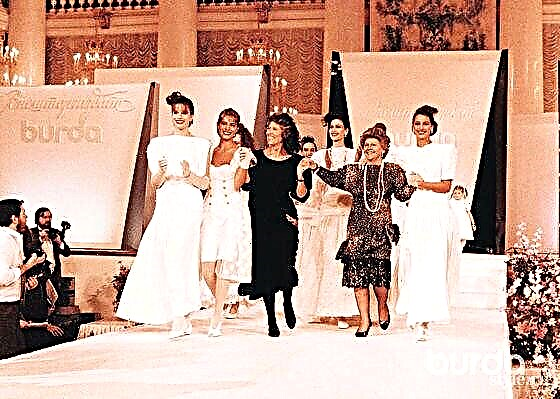About the types of self-adhesive film, its properties, the subtleties of its gluing and care for it - in our review.

Self-adhesive film is a simple and affordable way to quickly update furniture and hide its defects (scratches, scuffs). Of course, in terms of resistance to external influences, the film will not argue, for example, with wood or natural stone, but with proper care it can last quite a long time, and besides, it can be changed quickly.
We paint furniture: 5 main rules and a master class
What is a self-adhesive film and how to choose the right one

* Self-adhesive film, it is self-adhesive, - a film with a decorative design on one side and an adhesive layer on the other. To protect the adhesive layer from dust and damage until it is used, it is covered with a paper base. When gluing, the paper base is peeled off and the film is glued to the surface to be decorated with the adhesive side.

Film under the tree on the coffee table
* The top layer of self-adhesive can be different: it can be made of glossy or matte vinyl or plastic, it can be dense or translucent, metallized or paper. Plastic and vinyl film - as a rule, the most durable, it can often be wiped and washed. Metallized is usually more susceptible to water, its top layer can be damaged, so it is better to use it on those items that will get less dirty and less likely to rub. It is better not to expose paper film in general to water.

It is better to cover surfaces with a metallized film that are slightly susceptible to external influences.
* The base most often has a markup - this is convenient.
* A thick film is usually pasted over furniture, window sills, doors, translucent - glass, mirrors. There is also a special color translucent stained glass film to create a stained glass effect on the glass.

Translucent frosted film on glass
* In color and texture, the film is very different - for different types of stone, wood, fabric, leather, plain, with a pattern, pattern, textured, glossy, matte, velor and so on.
* Another film can be protected from ultraviolet radiation - this means that, being in direct sunlight, it will not fade, it will not change its color.
* The choice of film depends on the surface that you are pasting. For a surface that is not distinguished by absolute smoothness, it is better to choose the so-called injection film. It is somewhat more expensive, but more plastic. If on the surface there are protruding heads of screws, rivets, nail caps, it is also better to take an injection film. The so-called clandy film is usually cheaper, but not so plastic: it is better to use it when you need to paste over large, even surfaces.
* Textured, textured, patterned film will help to hide flaws and irregularities of the original surface. And smooth, metallized, glossy, on the contrary, will emphasize them.
* Usually enough water, a cloth and liquid detergent to clean the film. Do not use abrasives, acetone.
How to paint a carpet (and why do it): master classes + ideas
How to work with a self-adhesive film: master class

To understand the stages of work, consider a simple project: pasting with a film the upper part of such a bedside table.
You will need:
- self-adhesive film;
- scissors;
- breadboard knife;
- ruler or centimeter tape;
- for smoothing the film - unnecessary credit card, plastic spatula, dry soft cloth;
- degreaser (alcohol);
- depending on the surface condition, sandpaper of medium and fine grain size, primer and putty may be needed.
Step 1

First you need to prepare the surface.Wash it, dry and degrease by rubbing it with alcohol. If the surface has significant irregularities, it may be necessary to fill the holes and / or sand it with a coarser first, then with a fine sandpaper. After grinding, carefully remove all dust and degrease the surface. In some cases, it is possible to apply a layer of acrylic primer (if the surface remains not perfectly smooth, if the glued thing is subjected to mechanical stress and especially strong adhesion to the film is needed). It is better to cover a wooden surface without varnish with a layer of polyester or primer varnish.
Step 2

Try on how many films you need to cut. For a small surface, simply attach the film, measure a larger surface and transfer the dimensions to the film.
Step 3

Cut the film with a margin of a few centimeters.
Step 4

Peel a piece of paper backing from one edge and attach the film to the surface to be glued.
Step 5


Press the film starting from the middle and smooth it to the sides.

Glue the film on wide surfaces in the sequence shown in the photo: from the center to the sides.
Step 6

Do not stick the entire film at once. Separate it gradually from the paper base, glue and smooth with a card or spatula. If the film is uneven, you can peel off a piece and glue it again.
Step 7



Having reached the corners, cut the film as shown in the photo ...

... and glue the pieces on top of one another, overlapping.
Step 8


Glue the film on the end sides in the same way, first - with your hand, then - smoothing with a card or spatula. If excess pieces of film remain, cut them with a breadboard knife.
Step 9

In the final, for the best fit of the film, go over it with a soft cloth, pressing well.
Done:

Photo and source: anikasdiylife.com, homedit.com, roguevalleyguide.com



